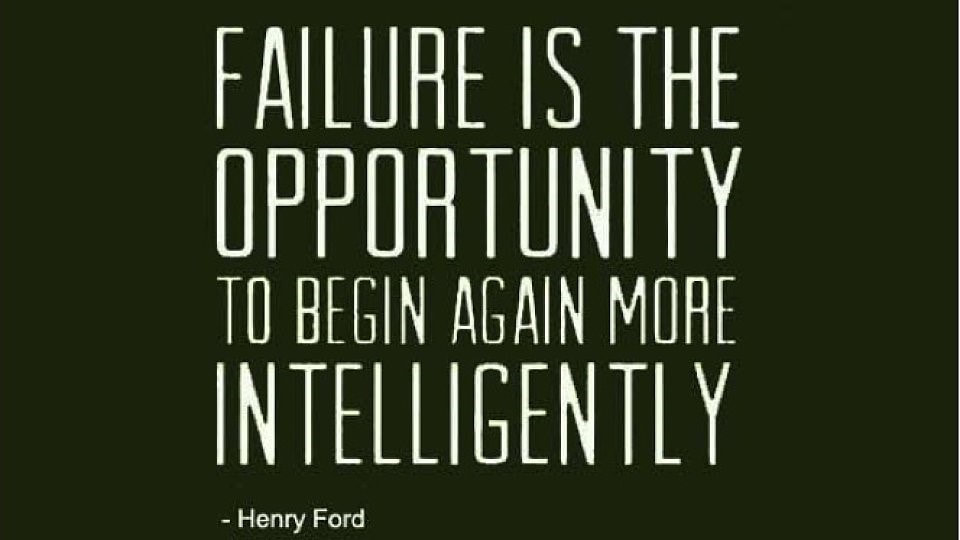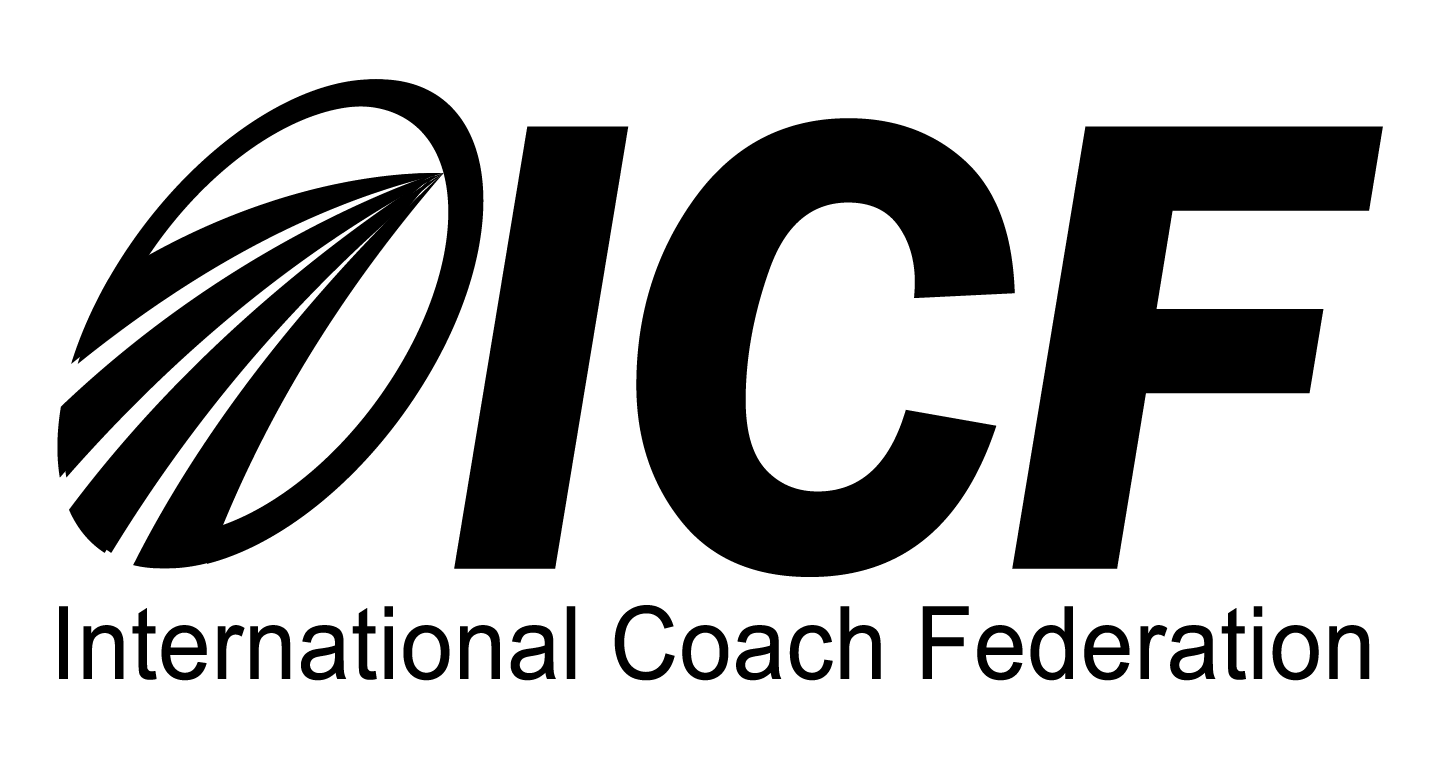|
One of the most challenging things that we do as leaders is to ask for and receive feedback, specifically feedback for improvement. Over the years of providing executive coaching, I’ve learned that no matter how well feedback is crafted, or creatively it’s packaged, it can sting. Yet feedback is everywhere in our daily lives—the bathroom scale, a mirror and performance reviews.
Great leaders have the courage to ask for feedback and receive it for what it is—sometimes an ugly-wrapped gift that offers a pearl of wisdom for growth and understanding. Great leaders receive feedback as an input mechanism for growth and development. How well are you prepared to receive feedback from peers, subordinates and supervisors in an open and curious way? How defensive or unprepared are you to respond to any and all requests? It also takes non-defensive behavior to clearly articulate gratitude for the feedback; then get clear about what behaviors would be more effective. Imagine that you start asking your direct reports for feedback. “Is there anything that I could stop doing or start doing that would make our relationship better?” Maybe one brave team member tells you that you need to stop scheduling so many meetings, so he has time to do the work you are asking of him. Do you lean in and continue to ask questions to clarify the request, or do you shut the conversation down and take the feedback personally? Do you behave like you are sincerely interested in the feedback, or do you jump to defend your behavior? What happens if you can’t make the change your direct report suggests? As a leader, you have to decide if you are willing to hear the feedback, and if you are willing to change the behavior. What would help you hear the feedback with curiosity, not judgment? If you aren’t willing to change the behavior, are there alternatives? Is there a way to work with this team member to solve his challenge? Or something else? Think about how you can be open and also have your own thoughts about the feedback without being perceived as defensive or closed to feedback. A few tips for receiving feedback:
Feedback is essential for great leadership and it’s a skill to be learned. No one is born with an innate ability give and receive feedback. It’s a practice that can be developed as a component of your leadership brand. As leaders, we often see how things should be and strive to make it a reality. A vision is necessary. As are having a compass, “must haves” and BHAGs (Big Hairy Audacious Goals). All are fundamental to providing us structure and space to innovate and accomplish cool things.
Now to 2020. Your team is working remotely while homeschooling their children during the pandemic. Or other countless scenarios of the norm of the day. Overwhelm and disruptions on a daily basis could be weighing them down. Others could be just fine with working from home and are isolating nicely. The possibility is that in an attempt to inspire your team to greater heights, you may not be meeting them where they are. Imagine being on a mountain-climbing expedition, and your guide, in his exuberance, is already a mile ahead of you on the climb while you’re still at basecamp packing your backpack. You might feel a bit frustrated, perhaps even angry and bitter, for signing up for this trip. One way to find out if you and your team are in sync is to get to know them. Some humility and transparency are helpful when you are trying to motivate the hearts and minds of others. If you are not sure how to meet folks where they are because you have a lot on your plate and deadlines looming, consider these ideas about how you might slow down and allow your team to catch up:
Once you meet your team where they are, it will be easier for them to follow your lead. They will respond better to a challenge that stretches them and moves them toward your vision in a way that allows them to be with you, rather than a team that never leaves basecamp. Most of us are so excited when we take on a new leadership role. We’re convinced that we’ve got the goods to make change happen. So, we tie on our capes and fly off to save the day. Because that’s why we were hired or promoted in the first place, right? To improve things. Well, that maybe the truth, but it’s never the whole truth. When entering a new role, it’s natural to see ourselves as agents of change. To somehow exceed the expectations of those around us and to prove that we are different from, and perhaps better than, our predecessor. Often, we misinterpret other’s perception as a desire for change, rather than what it truly is – a hyper-awareness that things could change. The whole truth is that very little could change, and that may be the best course of action. Tips to Guide Change Leaders often step into their new role and want to start “fixing” what their predecessor did. Perhaps the desire to “fix” the situation comes from a need to reaffirm their hiring or to cement their authority to make changes. Or perhaps, it’s a matter of establishing their brand or putting their stamp on the company. But before you jump in and enact “change for the sake of change,” I suggest that you consider the following recommendations to fully understand your new role so that you can determine where change would be beneficial.
Without buy-in and support, it’s impossible to execute change in a manner that is not catastrophic, in some way, to the organization. You achieve that support by doing the work required to understand better the challenges you are presented with. Just initiating “change for the sake of change” is often unsustainable, counter-productive, and ironically can result in you taking a few laps on a hamster wheel. Few of us intentionally set out on a course to make “change for the sake of change.” The best way to make sure that we don’t fall into that trap, as leaders, is to tune into our purpose and intentions for making decisions. Are you struggling with organizational change? Send me a note. Related Articles Set Priorities and Eliminate a Few Spinning Plates April 22, 2019 You’ve seen it scaling the walls of tall buildings. Scaffolding and its intricate latticework provide access to new heights for the people on the ground. While skilled, their talent lies dormant until they climb the rungs and apply that skill to the task at hand, one section at a time.
Scaffolding is a lot like the frameworks I use with my clients to help them see themselves as the leaders they need and want to be. These frameworks are designed to support learning in a way that has meaning and context while moving aspiring leaders into position to advance. Once the scaffolding is in place, then my clients begin to navigate the sections, filling out the form and function of the what, why and how of their learning and development. The Four R’s I refer to one of my “go-to” frameworks as The Four R’s. While not applicable to all executive and leadership development tactics, from what I’ve observed, experienced and studied, great leaders will exhibit a strong showing of each of the four R’s in some way. Let’s take a closer look at what I mean:
Consider what framework helps you orient yourself to your personal and professional development. How are you building competence and mastery in the Four R’s and is your team responding? Send me a note and let me know. Related Articles Relationships: Creating a Force for Good August 18, 2018 Resilience: Flex and Bend Like Gumby February 2, 2018 Strong contributors in the workplace have mastered the practice of self-reflection. Taking a long, hard look in the mirror throughout your career reveals the trouble spots that can create problems at work and stymie your ability to move forward as a leader. One of the biggest detractors from upward mobility is a lack of confidence.
A leader’s lack of self-confidence is often the root cause of breakdowns and inconsistencies in organizations. Leaders who lack confidence often manage in dysfunctional ways because they are plagued by uncertainty. Instead of making firm decisions, they add qualifiers to hedge their bets. They may micromanage the work of others for accuracy but, perhaps more so, to preserve their reputation as leaders. Insecure leaders are compelled to set up guardrails to limit their vulnerability to criticism. But believe it or not, being vulnerable and willing to be wrong comes from a place of true self-confidence. Fear and egocentricity are the traits that cause us to project and protect a façade of perfection, limiting us from being able to make mistakes – and own up to them. And most importantly, grow from them. The Road to Self-Awareness Developing self-awareness, which is foundational to developing emotional intelligence, is key to building self-confidence. Understanding your strengths and growth areas removes the veil of ambiguity and empowers you to move forward with budding confidence in your abilities. And the process starts with you. Take the time to study yourself, taking note of your tendencies, behaviors, likes, and dislikes. For example, you may notice that you spend a lot of time criticizing yourself or others. Ask yourself what these thoughts, or patterns of thinking, are telling you about yourself and your approach to work and relationship building. Then, focus on your career. Make a list of the things that you’ve accomplished. You should start to see a pattern in the areas you excel in, so place an asterisk by those. In the margins, note examples to support your belief. Once you’ve created your list, reflect on what situations and tasks tend to reduce your self-confidence. Notice if you are comparing yourself to others, in-person or online. (It’s true that you can’t believe everything you read on the Internet.) Helpful to this process are assessments like StrengthsFinder 2.0 by Tom Rath, which can reveal some clues about your strengths. Once you have done your self-reflection, start asking for feedback from trusted advisors and colleagues, or a coach or mentor. This “advisory team” can hold up a mirror to you in an authentic, non-judgmental way to help you see yourself as others see you. This will reveal if others experience you the way you want to be experienced. For example, you may feel that you excel in one area, but others who see you operate in that space may suggest that you spend additional time growing in that area. That insight is beneficial to building your confidence in that space. Finally, act. Acting from a place of knowing is very powerful in building self-confidence. Develop a plan to address the self-limiting behaviors you’ve identified while celebrating the areas that you excel in. The Reward of Confidence The Ancient Greek adage “know thyself” is as relevant today as it was centuries ago. As a leader, knowing yourself through the eyes of others will improve your effectiveness and impact, and decrease stressors and dysfunction in the workplace. The more aware you are of your drivers and motivations, the more confident you will become in your position as a leader – confidence that will reward you in a positive response from your team. Does this sound familiar? If you are struggling to find what motivates you as a leader, send me a note. Let’s work through it together. As modern leaders, we often run too fast to notice that what we mean does not always match what we say. A lack of thoughtfulness when communicating creates a gap between what we intend to communicate and what is heard, which can sabotage effective work teams and destroy employee morale.
Let’s look at a couple of examples. I spoke with a senior executive of an organization once who shared his company’s leadership philosophy: Hire slowly, fire quickly, and focus on the top three metrics. From the leadership perspective, they are proud of the “hire slowly” part because it suggests that they are thoughtful in their approach to hiring, resulting in fewer firings and greater retention. Ironically, as my team delved deeper into the organization, we learned that the emphasis for the folks two levels down was on the “fire quickly” part. They lived in perpetual fear of being unexpectedly canned. It created a culture of blame and suspicion and dampened creativity. Employees became order takers instead of innovators, doing just enough to stay employed. Another well-meaning executive set out to communicate to a team member how much she valued his work. She informed him that she’d planned to add him to a special project team, but was ultimately unable to do so for various reasons. Rather than feeling valued, the team member felt rejected and disappointed by this news. The executive’s approach could have also been misconstrued as self-serving, attempting to gain favor with a hard-working employee that could benefit her down the road, but leave nothing on the table for him. Think about it. How did he benefit from being informed of a role he couldn’t get? Communication Filters When leaders speak with employees, it’s important to hear those messages from their vantage point. Put yourself in the shoes of a new hire, an employee with 1, 5, 10 years of service, or someone being asked to retire early. How would you interpret the message you’re receiving? Effective leaders use filters to refine their message down to the most palpable version, making it easier for the recipient to digest. What do I mean by filters? Consider this. If you are unsure of how your message will be received, take the time to test it on a small group or a trusted colleague. Their feedback acts as a filter, helping to strain out pieces of the message that could potentially be destructive. Asking questions like, “What message did you hear when I said this?” can help you identify opportunities to clarify miscommunication. Also, consider recording your message on your favorite voice app. Then, play it back. While this doesn’t replace peer feedback, it’s eye-opening to hear our thoughts played back to us. If you cringe, so will they. Body Language Leaders on the move can often only hope that their words are being received the way they intended. But if you want to be sure, a healthy habit is first to slow down and then, watch your body language and the facial expressions of others as you deliver a message. If you are delivering good news, but your employee’s face appears blank or disappointed, that could be a red flag that you’re off target. If you’re laughing and they’re not, that’s a good sign that the situation may not be funny, at least to them. Or, if you’re leaning in, and they’re leaning out, you’ve lost them. Don’t be in such a rush to talk that you miss the deafening silence in the room. Open Dialogue Finally, maintain an open communication policy where feedback is encouraged and expected. No one communicates perfectly all the time, so take that pressure off yourself. But don’t use that as an excuse not to show up and bring your best self to work every day. Become the kind of leader that people know they can talk to and you’ll win them over. The best gift a team member can give to you, and you to them, is feedback. Are you struggling with effectively communicating with your team? Let's talk. Related Articles Showing Gratitude for the Gift of Feedback May 6, 2019 Relationships, Creating a Force for Good August 8, 2018 Most of us have experienced a technically competent leader, possibly an expert in his or her field, who seems to consistently miss the mark when it comes to emotional intelligence (EI). EI, sometimes also referred to as “EQ”, is the ability to express and control our emotions and our ability to understand, interpret and respond to the emotions of others. A leader with low EI is unable to regulate their response to external triggers or exhibit concern or interest in those tasked with following their lead. They are often characterized as demanding and aloof, lacking empathy and rarely show gratitude for the effort and work of others, but quickly pounces when they are off target. Sound like someone you work with? Each one of us has at least one story of someone in our career who blew us off, humiliated us in a meeting, micromanaged our work, broke a confidence, threw a chair in a meeting…okay, maybe not that one specifically, but something that metaphorically can feel that extreme. Leaders with low EI are often highly capable at doing what the job requires yet unable, or perhaps, unwilling, to demonstrate care for others. They may be volatile and unpredictable when under stress. They are less likely to concern themselves with the emotional well-being of those on their team and others. The costs to an organization of low EI leaders, particularly in executive roles, can be substantial. Yet, they are often dismissed as a cost of doing business , rather than a risk to the business. The good news is there are meaningful ways to quantify the impact of low EI and also effectively manage the behavior. Let’s take a closer look at what some of those costs are: Reduces Productivity The compounding effect of working for or with someone who has low emotional intelligence is that it’s much more difficult to be at our best when we’re adapting to and avoiding these dysfunctional behaviors. Someone with low EI in a leadership position will have the resources and power to make decisions that can cascade tension, drama or worse in the workplace. All leaders are paid to have productive conversations and remove barriers to good work in order to achieve outcomes for the organization. But leaders suffering from low EI are the barriers. Their presence on the team delay or reduce productivity by creating distractions and fueling dysfunction, as well as negatively impacting learning and development. Decreases Profitability Low EI isn’t just a people issue. It has a direct impact on the financial health of the organization. Lower productivity, higher turnover, increased stress, waning engagement, reduced creativity, fewer productive meetings and conversations, and low morale, to name a few, all correlate to low emotional intelligence. We tend to discount these costs because the solution to addressing this behavior might be difficult conversations and organizational disruption. It may mean losing a talented senior executive who can’t seem to keep his or her department staffed. But if you add up the hours (yours and others’) spent on dealing with drama, re-work, turnover, stress and burnout in the organization, you’ll conclude that avoiding those uncomfortable conversations is costing your company dearly. 3 Ways to Improve Emotional Intelligence For leaders, if this dynamic sounds familiar to you, then you're taking the first step toward solving the problem. Being self-aware means that you have a pretty good idea, from feedback and experience, of what your emotional triggers and derailers are. Knowing how these “blind spots” affect others is a product of asking for and genuinely listening to feedback:
Self-management means taking steps to actively change dysfunctional behaviors, not making excuses about this being who you are. You may need someone else to help you work through the steps above, as being honest with ourselves isn’t always easy. Executive coaching is a great resource for helping leaders struggling with low emotional intelligence to identify and adopt more productive and positive behaviors to reduce the cost of low EI in the workplace. Have a question not covered here? I’d love to hear from you. Please send me a note. Related Articles Relationships, Creating A Force For Good "Forget the failures. Keep the lessons." - Dalai Lama
Take a moment to recall how you felt when you realized that you’d failed. That something you attempted to do didn’t work and had significant consequences, on others and yourself. At that moment, you find yourself standing at the intersection of risk and reward, where your success as a leader teeters on your ability as a leader to recover and move forward. That’s not an easy move to make for any of us. Our tendency might be to take the safer road to avoid the pain of ridicule, the humiliation of scrutiny, or the perception of our incompetence. And yet we know, at least intellectually, that without some failure in life, we won’t grow, and world-changing creations like electricity, medical advances and flight would never have happened, right? Insulating yourself from failure stifles your growth as a leader and cripples your ability to navigate and course correct when (not if) the environment creates turbulence for your organization. Taking risks and being willing to fail begins with our mindset. While some people seem to be wired this way, the willingness to take risks is a skill you can develop, whether you are an entrepreneur, executive or rising star. Here are a few suggestions:
Embracing failure requires courage and intention, but mastery of it develops resilience. As leaders, we run the risk of missing opportunities for greatness and innovation by dumbing down our work to what’s safe and comfortable. Be determined to fail forward. Have a story about a failure that paved the road to your success? I’d love to read it. Send me a note. Related Articles Showing Gratitude For The Gift of Feedback May 6, 2019 Shredded Dog Beds and Coaching Yourself Through Obstacles July 15, 2018 High-performing leaders have a drive and work ethic that makes them seem superhuman. Instead of leaping over tall buildings in a single bound, they skip over weekends in hot pursuit of success. These goal-oriented doers and thinkers live, eat and breathe their work. They attack challenges and devour opportunities masterfully and consistently, with little doubt in their ability to do so.
Sadly, this is also the group that often misses the warning signs. It may be illness and extreme fatigue, or super-sized anger laced tantrums or unexplained crying episodes. Sleep becomes evasive, and even small issues can become overwhelming. I know. I’ve been there and done some of that. When you’re on fire for what you do, the work can become consuming. And without some downtime to rest and refuel, reflect and reframe…to think…we will move from swimming to drowning over time. The Benefit of Self-Care Despite all of research that promotes sleep, healthy eating habits, and exercise as proven ways to help us live longer and lead happier, more resilient and productive lives, we still rather “push through the pain” to accomplish more in a day, or a lifetime. While we can rationalize that some stress is good to challenge us to the next level, too much stress and poor stress-management skills will eventually cause our mental and physical health to suffer a set back. But I have a challenge for you. Reframe the way you think about self-care. Instead of seeing it as a sign of weakness, esteem it as essential to your success… a superpower even. Just think about it. How much better would you be if you had a good night’s sleep most nights? What if you started Monday morning with a hot cup of coffee because you like the taste not need the rush? Imagine the increased productivity you’d experience, the fresh ideas, and better insight into problem-solving, or just being a nicer person to be around. These are all wins, and perhaps the following self-care tips can help you get there:
The Choice is Yours We may not want to admit it, but we do have a choice. We can choose to try one of the self-care tips mentioned above or choose to continue burning the candle at both ends. In one of my recent favorite books, “Essentialism: The Disciplined Pursuit of Less” by Greg McKeown, I read that successful leaders make decisions every day with attention to the “important few.” Clarity and focus for the rest of an organization won’t happen if leaders are unable to discern the important few, and without that focus, teams will become overwhelmed, confused and unduly stressed. Choosing our priorities and being conscious and present to what and why we are choosing to say “yes” or “no” to something, allows us to right-size our commitments and create more successful and realistic outcomes. It feels awkward at first to change our adrenaline-induced to-do list to something more focused and “less than,” but in time, you’ll settle into a rhythm. Opting to be home for dinner a few nights a week, for example, and leaving the office by a particular time to help you get there should help you learn to increase your efficiencies and right-size your workload. Time to Act It’s not easy to change habits, and often successfully changing a habit begins with a choice to do one thing in the direction that you’d like to change. You might start with the following questions:
Jot 1-3 ideas down and schedule time on your calendar to try these new moves in your life to see what reduces stress, increases your ability to creatively think, and improve your health. I’d love to hear how you are benefiting from choosing to make self-care a priority. Send me a note. One of the most challenging things that we do as leaders is to give and receive feedback. It has been my experience as an executive coach and former leader that no matter how well crafted, feedback can be difficult to deliver in a way that builds trust and supports the development of your team, and yet it is a large part of our daily lives. Most assume that feedback is always negative although, by definition, it is simply the evaluation of your behavior, and can be either negative or positive. But for this post, let’s assume that the feedback you’re facing right now falls into the “needs improvement” column.
Glass Half Full? As the saying goes, “negative feedback isn’t always bad and positive feedback isn’t always good.” If a leader is continually praising those around him or her, the assumption is that everyone is knocking the cover off the ball and there’s no need for improvement, which is unlikely and a missed opportunity to challenge and develop people. Negative feedback, however, provided in the right context and with the right delivery and intention, is perhaps one of the best ways to elevate the performance of your team and set them up for long-term success. Great leaders find a way to reframe feedback from a judgment of who we are to an input mechanism for growth and development. But what if it’s you, the leader, under the microscope? Are you prepared to receive feedback from peers, subordinates and supervisors in an open and curious way, or do you tend to go on the defensive when critiqued and shut down? Providing and receiving feedback requires transparency and a level of vulnerability that make most of us uncomfortable. But if you manage to channel the courage to give and receive feedback, and empower those around you to do the same without the fear of retaliation, you cultivate an honest dialogue the leads to better performance for both you and your team. How to Receive Feedback Here’s a bit of reality. Imagine that you start asking your direct reports for feedback, like, “What do I need to start doing, stop doing or continue doing to improve our working relationship?” Maybe one brave member of your team tells you that you need to stop scheduling so many meetings during lunch because that’s his only time to take a break during the day. As the leader, you have to decide if you are willing to hear the feedback and willing to change the behavior. If you aren’t willing to change the behavior, would you consider alternatives such as creating another opportunity for him to have a break later in the day? It is important to remember that giving and receiving feedback is only part of the equation. Demonstrating that the feedback has been heard through action creates the change. Consider these tips for receiving feedback:
It is often said that feedback is a gift. Sometimes, it may feel like a gift you want to return, but I encourage you to hold on to it, open it up, and see the benefit it can be to you as a leader. It also takes non-defensive behavior to clearly articulate gratitude for the feedback and courage to be clear about what behaviors would be more effective, even if the corrective behaviors fall in your court. Embrace the art of feedback as one of your leadership super powers to be practiced and flexed to develop and engage others in pursuit of high performance. |
|
PO Box 682941, Franklin, TN 37064 | 615-308-0550 | [email protected]
© 2018 Terry Humphrey, Executive Coach | Site Design by: Celebelle
|
Vertical Divider
|
affiliations
|











 RSS Feed
RSS Feed



